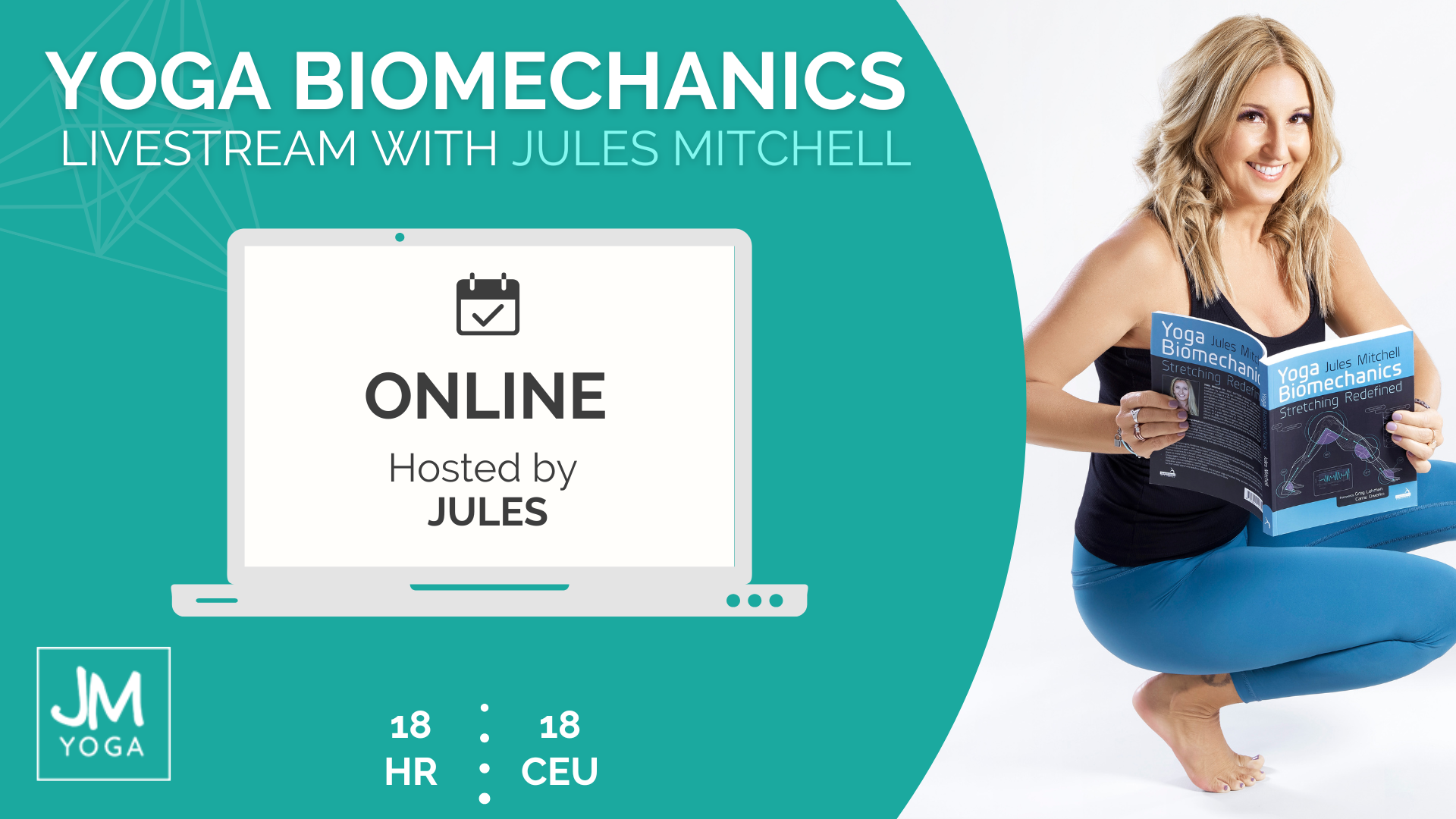I finally did it. I completed my literature based research and successfully defended my thesis to the evaluating committee – I am officially peer reviewed. I honestly never thought it would end. There were times I just wanted to walk away. I had already learned so much, why should I torture myself with edits, more writing, and the defense?
To get the official approval of other experts in the field, that’s why!
I truly have a greater sense of accomplishment knowing that I presented the content of my research to a group of Exercise Scientists and a Physical Therapist who could evaluate my interpretation of the literature.
This, in my experience, is the opposite of how learning within the yoga community works. We tend to trust our teachers, who are deservedly well respected, but who are rarely peer reviewed. As a result, ideas transform into anecdotal evidence and systematically evaluated scientific evidence mutates until it corroborates the anecdote.
The term “tight” is such an example.
The term “tight” describes a sensation. When you stretch to your limit, you feel tight. This is a sensory input to your brain that triggers a halt in your range of motion, most likely to protect you from injury. Your are supposed to be tight, to experience a warning from the nervous system that the end range of motion (ROM) is near. This is a desirable response!
Tight does not describe a mechanical condition. Nowhere in the literature is there a mechanical definition for tight. It does not describe a concentric muscle contraction, muscle shortness, connective tissue shortness, fibrosis, joint friction, stiffness, nor any other mechanical metaphor such as locked-short, facilitated, tense, or an inability to “open.”
Tight is a response to a stretch, not the cause of an unyielding tissue.
The nervous system has a tremendous impact on range of motion. Researchers tested this theory, measuring passive knee joint ROM and the mechanical properties of the patellar tendon, in two groups of subjects. Both groups, the “flexible” and the “inflexible,” showed no significant differences in tendon stiffness, stress, strain, elasticity, despite extensive differences in range of motion. The interference of joint friction aside, this research suggests that passive knee joint ROM is governed far more by neural input, than by mechanical properties [1]. During passive flexibility tests as these, although the subject is not actively moving the limb, the conscious subject is still receiving sensory information, regulating and limiting movement by a motor output.
Tight, the motor output (response) caused by sensory input (cause), is measured as a function of stretching tolerance in human trials. Since it is unethical to stretch a human subject beyond the point of pain or discomfort, tolerance determines the end range of motion [2, 3, 4, 5].
The peripheral structure of the nervous system providing sensory input for stretch tolerance, however, has never been identified. It is therefore difficult to control for in a study. Researchers on opposing sides of the Sensory Theory, attempt to prove and disprove the stiffness argument as an attempt to invalidate or validate (respectively) tolerance. (If you do not remember the mechanical definition of stiffness, I suggest you catch up on it here and here, because I am not using stiffness as a metaphor.)
In one study, stiffness was reduced after 5 immediately consecutive stretches. The effect was temporary, however, and baseline ROM returned within 60 minutes. The same subjects, in the same trial, did not show reduced stiffness after 3 weeks, suggesting the changes were due to the temporary time function of viscoelasticity [4].
In another study, stiffness decreased after 4 weeks of a much higher stretching volume and the researchers hastily concluded that reduced stiffness was the source of increased ROM [6]. Even if stretching adaptively reduced stiffness, and there is evidence that stretching may actually increase stiffness thereby improving force transmission [7, 8], it would not mean that stiff subjects have less ROM. If stiffness were the cause of inflexibility, the increases in muscle-tendon stiffness due to strength training would interfere with movement.
This conclusion illogically links strong with inflexible. Assuming the strong individuals must have ranges of motion limited by their stiffness is inaccurate outdated. But that’s another blog.
Let’s move on to the significance of understanding what “tight” means. I mean, really, who cares? What difference does it make if I use tight as a mechanical or sensory limitation?
To me, that’s like saying “Who cares if Earth is round or flat?” From my desk, I have a gorgeous view of the horizon over the Pacific Ocean. Sunsets are stunning whether Earth is round or flat.
But if I were a Geographer and I were still saying the Earth is flat, I would not be contributing much to the field, nor to many other fields of globalization, transportation, environmentalism…you get the point.
Being a yoga teacher and misunderstanding “tight” is not contributing to the kinesthetic awareness of the population. Let me give you an example.
The way in which we commonly use the word “tight” alludes to a shortened tissue which must be released/lengthened by a stretch. Yoga teachers (even well respected and highly knowledgeable teachers) tend to describe a muscle as “tight” when they think it will not relax, or is resisting a stretch. If that were accurate, then an overstretched (elongated) muscle could not be “tight.” The “tight’ feeling, is in fact, already stretched. In which case, the remedy of stretching does not alleviate the discomfort.
I work with many clients who suffer from pain associated with scoliosis. They all complain about the stretched side (right side, photo below) feeling “tight” and are always trying to stretch that side. The compressed side (left side, photo below) is ignored. If “tight” means “short”, then the self prescribed stretching treatment is exacerbating the situation. But tight is a feeling in response to stretch, therefore they should be stretching the other side, the side that does not feel tight.
Additionally, I have found that eccentric training of the compressed side is even more effective than passively stretching in providing more long term relief from pain (aka tightness) – but that’s also another blog and does not invalidate passive stretching to improve tolerance.
In conclusion, as long as we are operating from anecdotal evidence – whether we think the world is flat or tightness can be “released” – we are being led down a dark, narrow path (to borrow a phrase from student in teacher training). Opportunities to help our students remain limited.
I understand I have not given you a replacement vocabulary to use, but this is a blog and not a book. I am surprised you are still reading. Plus, there is much more to learn before simply adopting a new language. Your students would be so confused! Instead, I challenge you to be aware of how often, and in what context, you say “tight.” You may find that you are better expressed without a verbal crutch. 🙂
_________________
[1] Bojsen-Møller, J., Brogaard, K., Have, M. J., Stryger, H. P., Kjaer, M., Aagaard, P., & Magnusson, S. P. (2007). Passive knee joint range of motion is unrelated to the mechanical properties of the patellar tendon. Scandinavian Journal of Medicine & Science in Sports, 17(4), 415–421. doi:10.1111/j.1600-0838.2006.00591.x
[2] Hayes, B. T., Harter, R. a, Widrick, J. J., Williams, D. P., Hoffman, M. a, & Hicks-Little, C. a. (2012). Lack of neuromuscular origins of adaptation after a long-term stretching program. Journal of Sport Rehabilitation, 21(2), 99–106. Retrieved from http://www.ncbi.nlm.nih.gov/pubmed/22387809
[3] Konrad, A., & Tilp, M. (2014). Increased range of motion after static stretching is not due to changes in muscle and tendon structures. Clinical Biomechanics. doi:10.1016/j.clinbiomech.2014.04.013
[4] Magnusson, S. P. (1998). Passive properties of human skeletal muscle during stretch maneuvers. A review. Scandinavian Journal of Medicine & Science in Sports, 8(2), 65–77. Retrieved from http://www.ncbi.nlm.nih.gov/pubmed/9564710
[5] Magnusson, S. P., Simonsen, E. B., Aagaard, P., Sørensen, H., & Kjaer, M. (1996). A mechanism for altered flexibility in human skeletal muscle. The Journal of Physiology, 497(1), 291–298. Retrieved from http://www.pubmedcentral.nih.gov/articlerender.fcgi?artid=1160931&tool=pmcentrez&rendertype=abstract
[6] Marshall, P. W. M., Cashman, A., & Cheema, B. S. (2011). A randomized controlled trial for the effect of passive stretching on measures of hamstring extensibility, passive stiffness, strength, and stretch tolerance. Journal of Science and Medicine in Sport, 14(6), 535–540. doi:10.1016/j.jsams.2011.05.003
[7] Knudson, D. (2006). The biomechanics of stretching. Journal of Exercise Science & Physiotherapy, 2, 3–12. Retrieved from http://medind.nic.in/jau/t06/jaut06p3.pdf
[8] Shrier, I. (2004). Does Stretching Improve Performance? Clinical Journal of Sport Medicine, 14(5), 267–273. doi:10.1097/00042752-200409000-00004
Extend Your Learning: Online Education With Jules
Yoga Biomechanics Livestream
My flagship 3-day livestream course is for teachers who have an insatiable curiosity about human movement and kinesiology, are eager to know what the research says about yoga, and are open to accepting that alignment rules aren’t always accurate. Includes 30 days of access to the livestream replay and slides. 18 CEUs. Learn more >





anen Jules! I just explained this concept to all the therapists on this past teAching tour. You could see the aha moments! Find out why the muscle is stuff(usually due to compensation for inefficient movement elsewhere) address that! Also, did you look at strain/counter strain theory or Total Motion Release? I find that especially helpful when working with kids with torticiollis. Keep it coming!
I am deep appreciation for your article/blog! As a professor of Anatomy & Physiology, I agree that the correct terms and explanations be brought to the “light” so all yoga instructors, myself included, can benefit and expand our knowledge base. Keep up the excellent referenced materials and bringing this out. and Congratulations on your successful defense!!!! Namaste
Chris Schwan
A breath of fresh air! Congratulations on successfully defending your thesis. But tightness and stretching – not only did I read til the end of the blog…I want more!
Hi Jules,
I’ve been checking in with your blog now and again, we have a lot in common. I’ve been working on teaching eccentric contraction with my yoga clients for about the past 4 years. I use the phrase “moving into length”, “meeting and matching” and a few others. I’m in graduate school right now for mind body medicine. I’m hoping to do a study on eccentric contraction. I would really love to get the opportunity to read your thesis. What an important contribution to the insanity that is going on right now in the yoga world. Congratulations for being a pioneer.
Best,
Katie
Hi Katie,
Thanks for commenting! I’d love to chat with you more. Are you going to collect data or do a lit review? If you want a colleague to share ideas with, I’m your girl.
Love,
Jules
As usual I found this extremely enlightening. I am not sure I use the word “tight” with my students. I have definitely asked them to consciously note where their bodies may be less/more flexible or accommodating and work within those nature designed constraints.
Hello Jules,
I have severe scoliosis where the L4/L5 are significantly impacting the sciatic nerve. I am a 50 yr old woman that found Ashtanga 2.5 yrs ago and knew that it was going to change my life. I had a love/hate relationship with the primary series. It was making me stronger and yet hurting me at the same time. I recently spent 6 days with Peg Mulqueen in a private intensive and we completely changed my practice and eliminated pain. Finding a teacher that modifies asanas to remove all forward folds and replace them with forward lifts was amazing. We also added side plank, but just on my left side (non-curve) to strengthen that side to remove the ‘tightness’ from the right (curve side). Focusing on strengthing the opposite to relieve pain on the primary is 100% of my focus. (i have a great x-ray pic if you want it….)